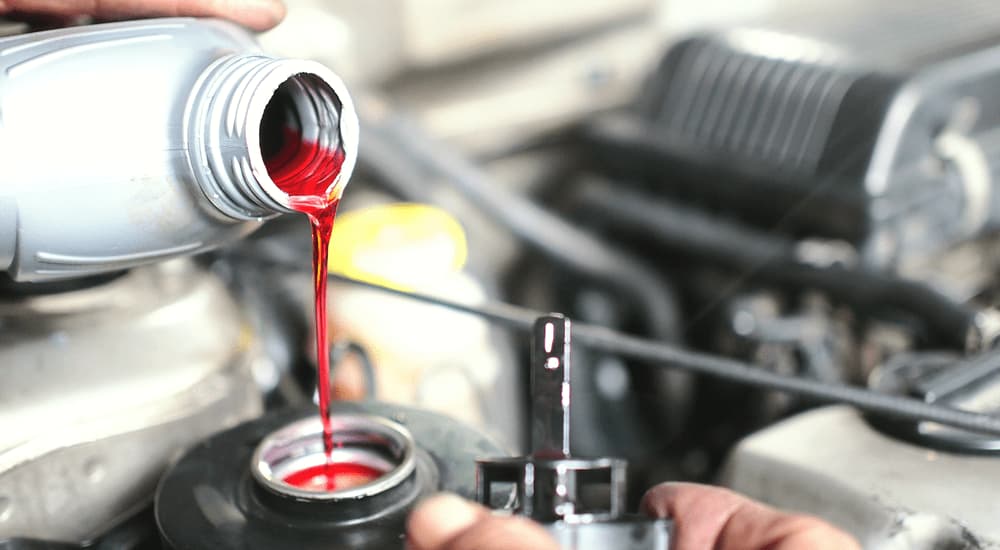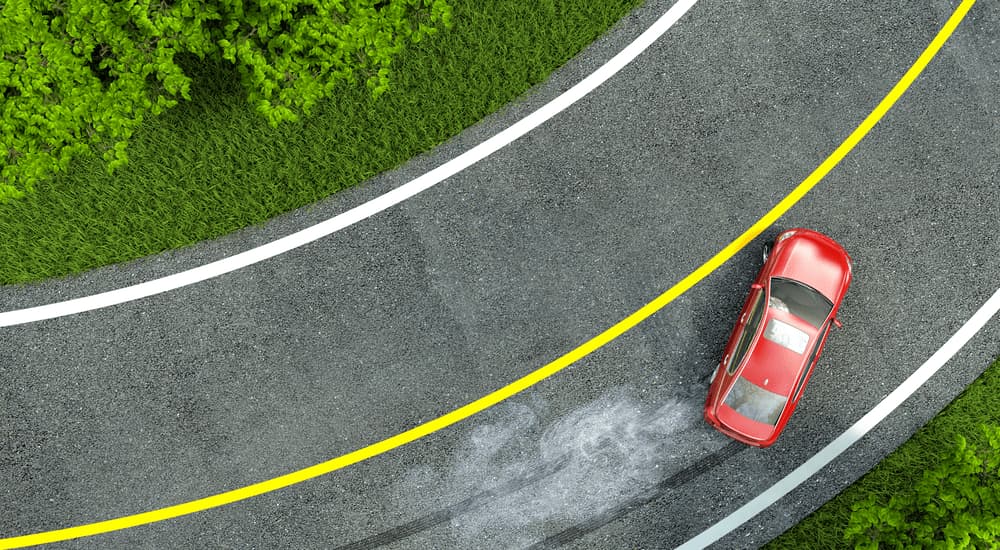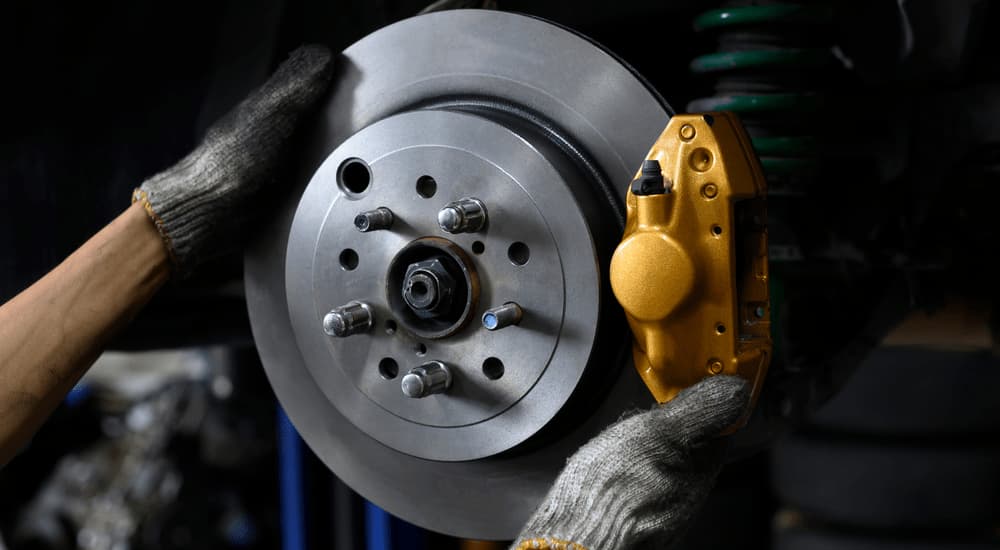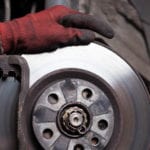When you’re behind the wheel, safety should never be an afterthought. With cars, trucks, and SUVs playing such a central role in everyday life, it’s all too easy to take for granted the fact that you’re hurtling down the road in a two-ton vehicle, often at speeds of more than 60 mph. Automakers have rolled out a number of advanced safety systems in recent years, with everything from lane-centering to adaptive cruise control and collision avoidance becoming almost commonplace in many of today’s vehicles. While these advanced driver assistance systems might be all the rage as of late, they still pale in comparison to your vehicle’s most important safety feature: the brakes.
As the sole component responsible for bringing the vehicle to a stop, it’s important that every driver understands the necessity and requirements of brakes. So what exactly are brakes? The term is actually a bit of a catchall that encompasses several different components that work in tandem to bring your vehicle to a stop. These include the master cylinder, brake pads, brake fluid, calipers, brake rotors, and brake lines. Let’s take a look at each of these components, examine their role, cost, and how to tell when they might be on their last legs before you find yourself furiously searching for “brake repair near me” while stranded on the side of the highway.
Master Cylinder
What Is It?: We all know that pressing your foot on the brake pedal causes the brakes to spring into action, but what actually sets this process in motion? That would be the master cylinder, which is activated every time you step on the brake pedal. When you hit the brakes, the brake booster multiplies the force you exert when you press the pedal, forcing a piston through the master cylinder, which in turn uses hydraulic pressure to force brake fluid through your brake lines.
Warning Signs: Soft, squishy brakes, dirty brake fluid that might leak onto the wheel or ground below, and an illuminated Check Engine light. Symptoms of a bad brake booster could include a stiff brake pedal, longer stopping distances, and an engine that stalls when braking.
Replacement Cost: When it comes to replacing your vehicle’s master cylinder, the part itself is typically going to cost around $250 to $350, while the labor is between $100 and $200, depending on the rates in your area. The good news is that it is a pretty rare fix, with many vehicles never needing a master cylinder replacement as the part is well protected from air, dust, and other contaminants. If it does come up, it’ll typically happen after the 125,000-mile mark. If you’d like to avoid a replacement altogether, follow the manufacturer’s maintenance recommendations which in this case typically involve flushing the brake fluid as well as cleaning and inspecting the individual components.

Brake Fluid
What Is It?: The medium responsible for transmitting the force from your pedal to the brake assembly itself, brake fluid uses hydraulic pressure to actuate the brake pads and slow the vehicle. Brake fluid not only translates a depressed pedal into active braking, but it is also a lubricant with anti-corrosion properties that helps to keep the braking system in tip-top shape.
Warning Signs: A soft brake pedal, less responsive brakes, and an illuminated Brake Warning light.
Replacement Cost: The average vehicle uses around a quart of brake fluid, so flushing the system and replacing it with new fluid is going to cost between $10 and $30 for the fluid itself and around a half hour in labor (which ranges from $100 to $200 an hour). This puts the average cost to replace your brake fluid at around $80 to $120, though it varies by make and model.
Brake Lines and Hoses
What Is It?: Brake fluid is carried through brake lines, which stretch from the master cylinder to each wheel. These solid metal tubes end at the wheels, where they connect to brake hoses, which transport the brake fluid to each individual brake caliper. Why the mixed approach? Brake lines are too rigid to accommodate the up-and-down movement of a vehicle’s wheels, and suspension and rubber brake hoses allow for a little more travel and reduce the risk of a rupture.
Warning Signs: Soft brake pedal or a brake hose that is obviously frayed, cracked, torn, or otherwise compromised.
Replacement Cost: Since they’re technically two different components, brake lines and brake hoses come with different repair costs. The good news is that it’s rare for a vehicle to require both brake line and hose replacement at the same time, as the damage is usually localized to one part of the other. Brake hose replacement will usually run around $100 to $150, with the component running between $30 and $50 and the labor making up the rest of the total.
Brake line replacement is a more expensive proposition all around, with the part itself costing $150 to $275 and the labor adding $50 to $100. Keep in mind that’s just for one brake line, so full replacement of all four could total as much as $2,000, though this level of replacement is unusual. If a vehicle does need new brake lines due to normal wear and tear, expect this repair to pop up around the 100,000-mile mark.
Calipers
What Is It?: The brake caliper is essentially the housing for the brake pads themselves. Think of calipers like metal clamps: when hydraulic pressure is fed into the brake calipers, a piston within the calipers forces the brake pads against the rotors, resulting in the friction that’s responsible for bringing the vehicle to a stop.
Warning Signs: Leaking brake fluid, less responsive brakes, a vehicle that pulls to one side, or brakes that engage even when the pedal is not pressed.
Replacement Cost: New brake calipers are going to run you $400 to $750, while the labor will cost between $150 to $250. The good news is that brake calipers are rarely past the point of no return and can often be reconditioned into good-as-new condition with a little elbow grease. Brake calipers will usually last the life of the vehicle, but if problems do arise, it’ll usually be when the vehicle has passed 125,000 miles.
Brake Pads
What Is It?: Brake pads are one of the more disposable elements in your brake assembly. Housed within the brake calipers, these pads take the brunt of the damage every time you activate your brakes as they grind against the brake rotors. Brake pads are made of a mixture of materials, including rubber, carbon compounds, glass or fiberglass, and Kevlar, which are then bound together with resin. Brake pads should be replaced every 15,000 to 25,000 miles or when worn down to 3 or 4 mm in thickness.
Warning Signs: Less effective stopping power and a tell-tale squealing noise when the brakes are depressed.
Replacement Cost: Unlike other parts of the brake assembly, you’re going to run through quite a few brake pads over the course of your vehicle’s service life. Luckily they are one of the more affordable replacements, with the cost averaging $200 to $300––$100 for labor and $150 to $200 for the pads themselves. And yes, we mean pads, plural. When it comes to replacing brake pads, you can’t get away with only doing one, so any replacement is going to include both sides of the axle, though if you need both the front and rear brake pads replaced at the same time, it’ll double the price. As we said, brake pads should last anywhere from 15,000 to 25,000 miles, but it all depends on driving style, frequency, and what type of terrain you’re navigating.
Brake Rotors
What Is It?: Lastly, brake rotors are the component that the brake pads squeeze against. Mounted on the inner side of the wheel hub, these metal discs also wear out over time, though they’re a little more resilient than brake pads. Brake rotors typically need to be replaced about half as often as brake pads, or at around 30,000 to 50,000 miles.
Warning Signs: Scraping or squealing noise, vibrations when you step on the pedal, grooves on the rotor, and compromised stopping distance.
Replacement Cost: Rotors are going to be a little more expensive than brake pads, typically costing between $300 and $400. That total includes $150 to $250 for parts and $125 to $175 for labor. Like brake pads, the frequency with which they need to be replaced will depend on several factors. Most mechanics will advise you to replace brake pads and rotors at the same time, as a worn-out rotor could cause unusual wear patterns on a brand-new pad and vice-versa.
The Most Important Safety Feature
Brakes are one of the most vital components in any vehicle and the last thing you want to leave to chance. While some brake-related repairs can be performed at home by any reasonably competent DIY mechanic, others require the experience of a trained professional. While it might be tempting to roll up your sleeves, grab a wrench and try to save some money, you have to ask yourself: do I trust my mechanical know-how backed by that ten-minute YouTube tutorial when it comes to bringing my 3,500-pound SUV to a stop in an emergency? If the answer is no, best bring it to your local mechanic or dealership and get the job done right.
That said, it’s fairly easy to diagnose many brake-related issues without consulting the pros, which will save you time and money that would otherwise be spent taking the vehicle from garage to garage as you try to track down that pesky noise, vibration, or leak. With a little knowledge and the experience that comes from spending hours behind the wheel of your vehicle, most brake issues should be easy to spot before they can become big-ticket repairs or, worse, roadside assistance calls.




